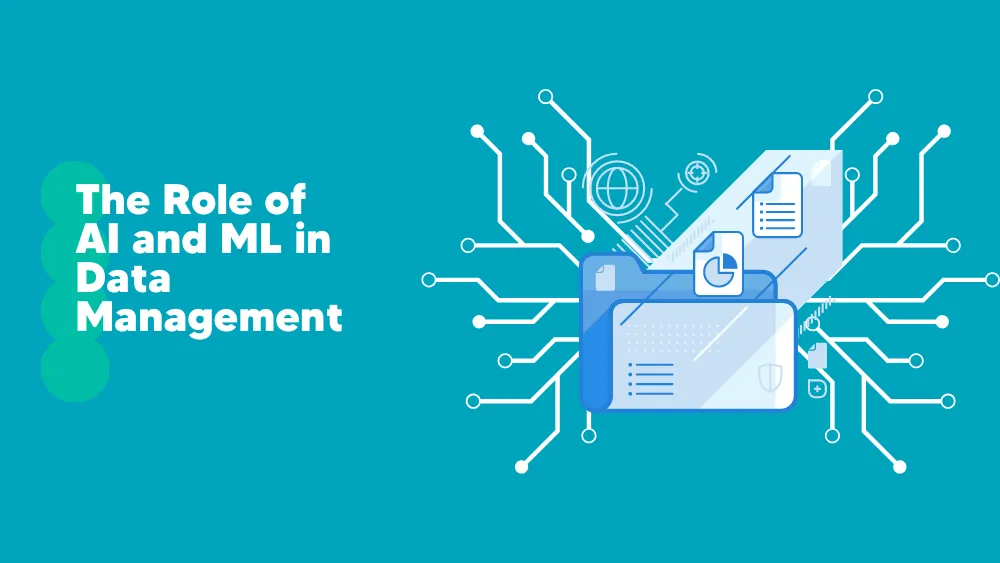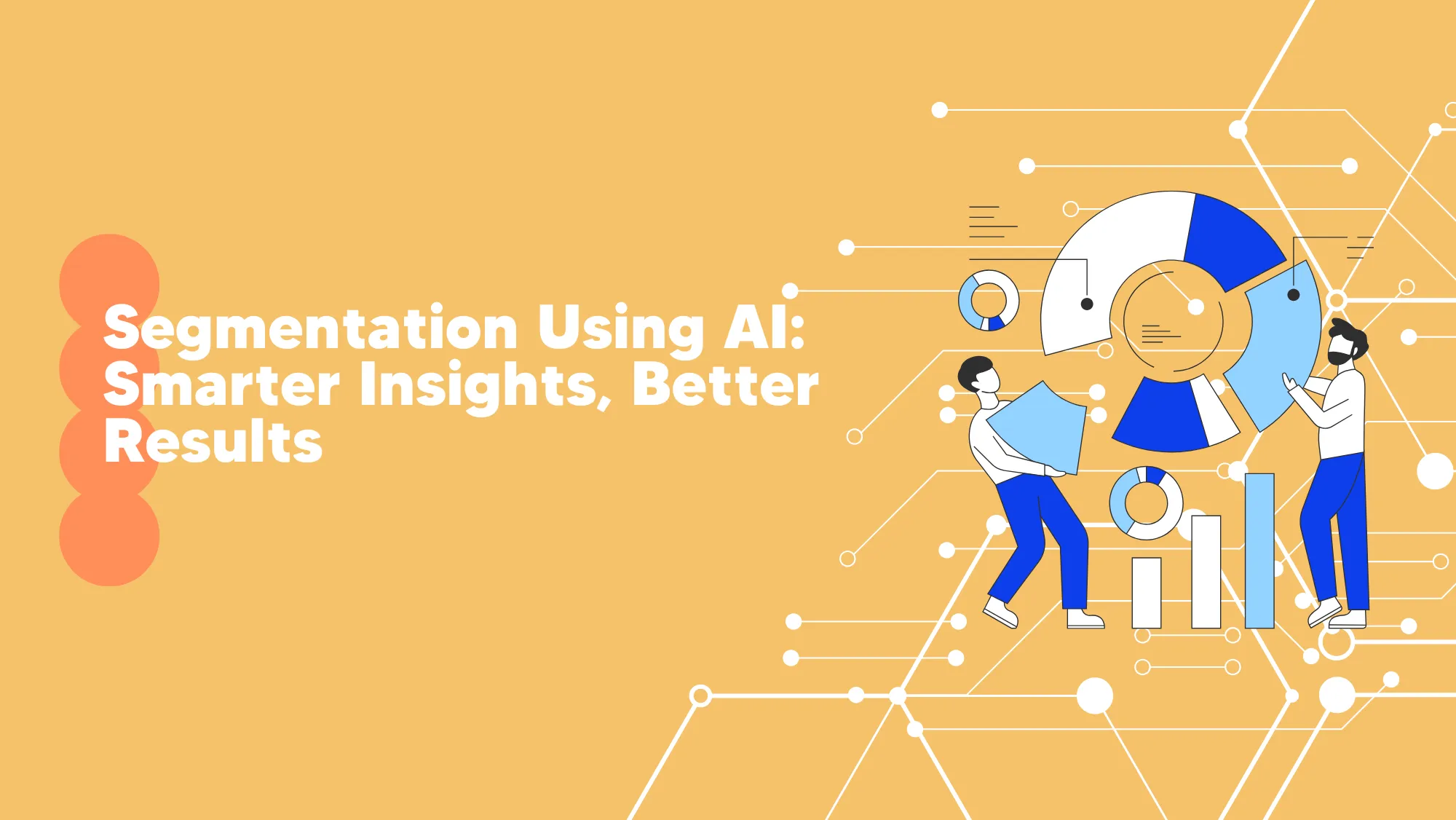In the dynamic and fast-paced digital age we live in, the importance of data management cannot be emphasized enough. With the proliferation of digital technologies and the exponential growth of data, organizations increasingly recognize the vital role of efficient data management practices.
In the article you read, we will delve into the importance of data management and explore how Artificial Intelligence (AI) and Machine Learning (ML) are becoming indispensable tools for managing and leveraging vast amounts of data. By harnessing the power of AI algorithms and ML techniques, businesses can gain valuable insights, make informed decisions, and unlock the full potential of their data assets.
We will discuss the fundamental aspects of data management and its strategic implications for businesses. We will explore how AI and ML revolutionize traditional data management approaches, enabling organizations to effectively handle large and complex datasets, derive meaningful patterns and trends, and improve overall data quality.
What is Data Management?
It is easy to acknowledge that, nowadays, Data Management plays a pivotal role in the modern business landscape, encompassing a range of activities aimed at organizing, storing, processing, and leveraging data to drive informed decision-making.
Handling large volumes of data presents significant challenges and complexities for organizations. The sheer volume, velocity, and variety of data generated from various sources can overwhelm traditional data management approaches. Businesses must grapple with the task of efficiently collecting, storing, and processing vast amounts of structured and unstructured data.
Furthermore, data quality and integrity are critical concerns in data management. Inaccurate, incomplete, or inconsistent data can obviously lead to flawed insights and decision-making. Data management strategies must address these challenges by implementing data validation, cleansing, and enrichment techniques to ensure data reliability and accuracy.
The need for effective data management strategies cannot be overstated. Businesses must extract valuable insights from their data to gain a competitive advantage, identify trends, make accurate predictions, and enhance operational efficiencies. By implementing robust data management practices, organizations can streamline data integration, improve data governance, and establish a solid foundation for advanced analytics and business intelligence.
Therefore, data management is the cornerstone of successful businesses in the digital era. It encompasses various processes and techniques to acquire, organize, and leverage data effectively. The challenges of large volumes of data necessitate adopting efficient data management strategies. By doing so, businesses can harness the power of their data to drive innovation, make informed decisions, and achieve sustainable growth.
Exploring AI in Data Management
Artificial Intelligence (AI) has emerged as a transformative technology with vast applications across various industries, and its impact on work and society is apparent. When it comes to data management, AI offers immense potential to automate and optimize various tasks, revolutionizing the way businesses handle and leverage their data.
At its core, AI refers to the simulation of human intelligence in machines, enabling them to perform tasks that typically require human intelligence. AI algorithms have been developed to analyze vast amounts of data, recognize patterns, and make intelligent decisions. This technology has applications in diverse fields such as healthcare, finance, retail, manufacturing, and more.
In the realm of data management, AI algorithms can play a crucial role in automating labor-intensive tasks such as:-
Data integration
It involves combining data from multiple sources into a unified format. AI algorithms can analyze the structure and content of disparate data sources, identify relationships, and facilitate seamless integration. This automation not only saves time but also reduces the risk of errors associated with manual integration processes.
-
Data cleansing
This is another critical task in data management aimed at identifying and rectifying inaccuracies, inconsistencies, and duplications within datasets. AI algorithms can analyze data patterns, detect anomalies, and automatically cleanse and standardize data, ensuring its accuracy and consistency. This automation improves data quality and reduces the manual effort required for data cleansing, enabling organizations to work with reliable and trustworthy information.
Data accuracy, consistency, and integrity
Through machine learning techniques, AI can learn from existing datasets, identify patterns, and predict missing or erroneous data values. By imputing missing values or rectifying errors, AI helps maintain data integrity and ensures the reliability of analysis and decision-making processes.
But, the role of AI in data management extends beyond automation and data cleansing. AI algorithms can also facilitate advanced analytics and predictive modeling.
By analyzing historical data patterns, AI algorithms can uncover valuable insights, make predictions, and support data-driven decision-making. This capability enables businesses to extract actionable intelligence from their data, identify emerging trends, and gain a competitive advantage in the market. A very good asset for any organization. So, as we can understand, AI is revolutionizing data management practices by automating tasks, improving data accuracy and consistency, and enabling advanced analytics.
By leveraging AI algorithms, businesses can streamline their data management processes, enhance data quality, and extract valuable insights to drive innovation and achieve organizational goals. As AI continues to advance – and we still don’t know how or where it will lead – its role in data management is set to grow, unlocking new possibilities for businesses in their general quest for data-driven success.
ML in Data Management
Machine Learning (ML) is another similarly powerful tool in data management, revolutionizing how organizations handle and derive insights from their data.
At its core, machine learning is, in fact, a branch of AI that enables computers to learn from data and improve their performance without being explicitly programmed. ML algorithms can automatically identify patterns, predict, and uncover hidden insights within vast datasets. This technology has gained prominence due to its ability to process and analyze large volumes of data efficiently.
- Analyzing Patterns and Relationships: ML algorithms analyze patterns and relationships within datasets. By leveraging ML techniques, businesses can identify valuable insights that may not be apparent through traditional data analysis methods. This enables informed decision-making based on data-driven insights.
- Anomaly Detection: ML algorithms effectively detect anomalies, which are unusual data points that may indicate errors, fraud, or opportunities. By flagging anomalies, ML algorithms help maintain data accuracy and integrity, enabling organizations to take prompt corrective actions.
- Data Classification: ML algorithms can analyze historical data to learn patterns and characteristics, allowing for the classification of new data points into relevant categories or classes. This capability streamlines data organization and retrieval processes, empowering businesses to make faster and more accurate decisions based on categorized data.
- Data Clustering: ML algorithms can group similar data points together based on shared characteristics. This clustering enables businesses to identify meaningful segments within their data, leading to targeted marketing campaigns, personalized customer experiences, and improved decision-making processes.
- Data Visualization: ML algorithms contribute to data visualization by transforming complex datasets into visual representations that are easier to interpret. Through the use of visual techniques, businesses can gain deeper insights into their data, uncover trends, and effectively communicate findings to stakeholders. As we have just reviewed, ML plays a significant role in data management by analyzing patterns, detecting anomalies, facilitating data classification and clustering, and enabling data visualization. By leveraging ML techniques, businesses can unlock the full potential of their data assets, make data-driven decisions, and gain a competitive edge in today’s data-centric business landscape.
Data Organization and Analysis
Efficient data organization and analysis are essential for businesses to extract valuable insights and make informed decisions. AI and ML techniques play a substantial role in streamlining data organization and retrieval processes. By leveraging these technologies, businesses can automate and optimize tasks that traditionally required extensive manual effort.
Data profiling, for instance, involves assessing the structure, quality, and completeness of datasets. AI and ML algorithms can automatically analyze data attributes, detect anomalies, and provide insights into the overall data quality. This enables organizations to understand their data better and take appropriate actions to improve its integrity and reliability.
Data indexing is another critical aspect of data organization, enabling efficient search and retrieval of information. AI and ML techniques can automatically analyze data content, assign relevant tags, and create indexes that facilitate fast and accurate data retrieval. This indexing process enhances data accessibility and enables businesses to locate and retrieve specific data elements quickly.
In today’s data-driven horizon, organizations are increasingly turning to Artificial Intelligence (AI) and Machine Learning (ML) to enhance their decision-making processes. AI and ML technologies, in fact, provide organizations with powerful tools to analyze and interpret large volumes of data, enabling them to make informed decisions based on data-driven insights.
These technologies can process vast amounts of structured and unstructured data, uncovering patterns, correlations, and trends that might not be apparent through traditional analysis methods. By extracting valuable insights from complex data sets, AI and ML enhance decision-making by providing a deeper understanding of business operations and customer behavior.
Key benefits
One of the key benefits of leveraging AI and ML for decision-making is the ability to optimize business strategies. As a matter of fact, these technologies can analyze historical data, market trends, and customer preferences to identify opportunities and predict outcomes. By leveraging predictive analytics and forecasting models, organizations can make data-driven decisions that maximize revenue, minimize risks, and gain a competitive edge in the market.
Furthermore, AI and ML can actually improve operational efficiency by automating processes, reducing errors, and enhancing productivity. For example, ML algorithms can be used for demand forecasting, supply chain optimization, and resource allocation. By analyzing historical data and real-time information, these algorithms can provide accurate predictions, enabling organizations to streamline their operations and optimize resource utilization.
Another valuable advantage of AI and ML in decision-making is their ability to uncover hidden insights and make complex data more accessible. Through data visualization techniques and interactive dashboards, organizations can gain a holistic view of their data and easily communicate insights to stakeholders. This enhances collaboration, facilitates data-driven discussions, and promotes a culture of evidence-based decision-making throughout the organization.
Moreover, AI and ML enable organizations to adapt to changing market conditions and customer preferences in real time. These technologies can analyze vast amounts of data in real time, enabling businesses to identify emerging trends, detect anomalies, and respond swiftly to market dynamics. Organizations can make timely decisions that align with customer needs and preferences by staying agile and proactive.
So, needless to say, AI and ML play an absolutely pivotal role in data-driven decision-making. These technologies are perfectly calibrated to enhance decision-making processes by providing deeper insights, optimizing business strategies, improving operational efficiency, and facilitating real-time adaptability.
Conclusion
As a result of the analysis we have just conducted, the revolutionary influence of Artificial Intelligence (AI) and Machine Learning (ML) on data management cannot be really underestimated.
Throughout this article, we have explored the significance of data management in the digital landscape and highlighted the growing importance of AI and ML in managing and leveraging vast amounts of data.
AI and ML algorithms have truly revolutionized data management practices by automating tasks, analyzing patterns, detecting anomalies, and predicting future trends. These technologies enable businesses to extract valuable insights, improve data accuracy, and make informed decisions based on data-driven insights.
The ability of AI and ML to uncover hidden patterns, classify data, cluster data points, and visualize complex datasets empowers organizations to gain deeper insights and communicate findings effectively.
Therefore, it is crucial for businesses to adopt AI and ML as integral components of their data management strategy. By doing so, organizations can stay ahead of the competition, adapt to market dynamics, and drive success by leveraging the power of data.
As we conclude this article, we encourage readers to embrace the transformative potential of AI and ML in data management. By incorporating these technologies into their workflows, businesses can open up novel prospects, enhance operational efficiency, and make data-driven decisions that lead to growth and success in the data-driven business world.








